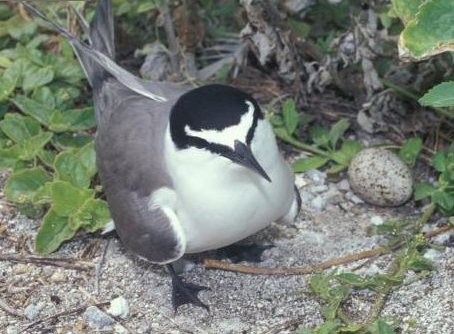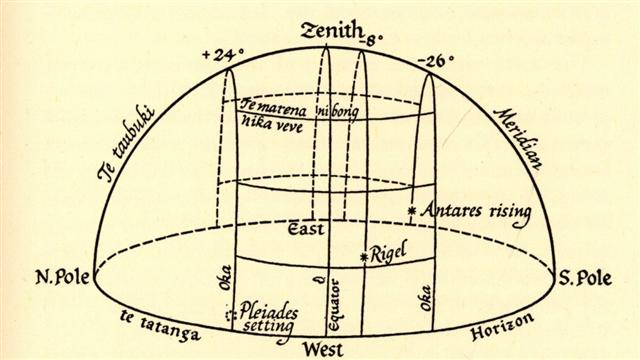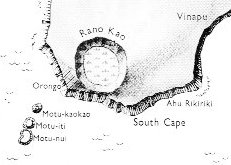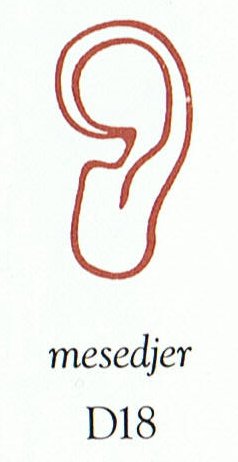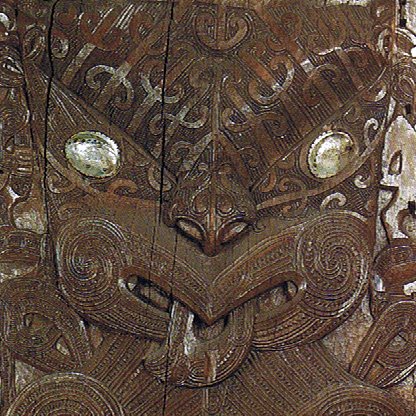414. We could guess that the Bird Man year might ideally have begun at the time when the Full Moon was arriving at Beid (the Egg, β Eridani) - at least when reflecting on the ancient time of Orion and the year of Rigel:
... The fowl, which was the only domestic animal known in Easter Island, may have come from the Marquesas where it was present but not from Mangareva where it was absent. Because it was the only domestic animal, the fowl received more attention and honour than in any other part of Polynesia. Fowls became the mark of wealth, and festivals were characterized by gifts and distribution of fowls. In order to protect them from thieves, fowl houses of piled stones were erected to house them at night. Stones were piled up against the entrance and the sound of stones being moved served as an alarm to the owner. Skulls with incised carvings, imbued with power by Makemake, were placed in the fowl house to promote the egg-laying capacity of the occupants. It may seem a long call from the domestic fowl to the sooty tern, but both are birds and lay eggs. The sooty tern (manu tara) comes to breed in large numbers in July or August off the southwestern point formed by the crater of Rano-kao on three rocky islets, of which the only one accessible to swimmers is Motu-nui. What commenced as an ordinary food quest for eggs became an annual competition to obtain the first egg of the season. The warriors (matatoa) of the dominant tribe entered servants for the annual Derby, and members of defeated tribes were not allowed to take part in the competition. The selected servants swam over to Motu-nui and waited in caves for the migration of the birds. The warriors and their families assembled on the lip of Rano-kao that overlooked the course. Owing to the strong wind, they built houses of stone for shelter at the village named Orongo, the Place-of-listening. There they listened for the coming of the birds and waited for the call of the successful servant who found the first egg. While waiting they amused themselves with singing and feasting and carved on the adjacent rock figures with birds' heads and human bodies, the symbol of Makemake, god of fowls and sea-birds. In time, rules and ritual were developed about this annual competition which became the most important social event on the island. The successful servant leaped onto a rocky promontory and shouted across the water to his master 'Shave your head. The egg is yours.' A sentry on watch in a cave below Orongo, termed the Bird-listener (Hakaronga-manu), heard the call and relayed the message up to the waiting masters. The successful master was termed the Bird-man (Tangata manu). On reception of the egg, the people escorted him to Mataveri, where a feast was held in his honour. After that he went into seclusion for a year in a house at Rano-raraku. The details of his functions and privileges are not known, but certain it is that he was held in high honour and provided with food by the people until the next annual Derby took place. The list of Bird-men was memorized and transmitted like a list of kings. The bird cult is not known elsewhere in Polynesia and is clearly a local development arising out of peculiar local conditions. The importance of the fowl as the sole domesticated animal, the annual migration of the sooty tern to a near-by islet to breed, the village of Orongo with its carved rocks overlooking the course, and the development of the bird cult are all in a natural sequence that could have occured nowhere else but on Easter Island ... The sound of arriving birds was heard by Hakaronga-manu, the Bird-listener. And in the dark thieves could be heard if they moved the stones which were piled up against an entrance - not a single great stone which was closing the door of Polyphemus but many rolling stones. ... Odysseus and his fleet were now in a mythic realm of difficult trials and passages, of which the first was to be the Land of the Cyclopes, 'neither nigh at hand, nor yet afar off', where the one-eyed giant Polyphemus, son of the god Poseidon (who, as we know, was the lord of tides and of the Two Queens, and the lord, furthermore, of Medusa), dwelt with his flocks in a cave. 'Yes, for he was a monstrous thing and fashioned marvelously, nor was he like to any man that lives by bread, but like a wooded peak of the towering hills, which stands out apart and alone from others.' Odysseus, choosing twelve men, the best of the company, left his ships at shore and sallied to the vast cave. It was found stocked abundantly with cheeses, flocks of lambs and kids penned apart, milk pails, bowls of whey; and when the company had entered and was sitting to wait, expecting hospitality, the owner came in, shepherding his flocks. He bore a grievous weight of dry wood, which he cast down with a din inside the cave, so that in fear all fled to hide. Lifting a huge doorstone, such as two and twenty good four-wheeled wains could not have raised from the ground, he set this against the mouth of the cave, sat down, milked his ewes and goats, and beneath each placed her young, after which he kindled a fire and spied his guests ... Orongo was the Place-of-listening:
... Long ago in the very beginning of time there dwelt within a shell an infant god whose name was Ta'aroa. He was Ta'aroa the unique one, the ancestor of all gods, the creator of the universe whose natures were myriad, whose backbone was the ridgepole of the world, whose ribs were its supporters. The shell was called Rumia, Upset. Becoming aware at last of his own existence and oppressed by a yearning loneliness Ta'aroa broke open his shell and, looking out, beheld the black limitless expanse of empty space. Hopefully, he shouted, but no voice answered him. He was alone in the vast cosmos. Within the broken Rumia he grew a new shell to shut out the primeval void ... Possibly Gb5-10 could illustrate a listening ear (tariga) in contrast to the 'eating mouth' (vaha kai) in Ca12-17:
... McEwen's matching of stylised half-face profiles with corresponding full-frontal faces reveals that what appears to be a full-frontal face in Maori art is actually a split representation composed of two profile forms, a feature of Maori tattoo and carving first described by Léve-Strauss (1963:256-64) following Boas's analysis of the same phenomenon in North-west Coast American Indian art (Boas 1955: 223ff). Split representation allows all the essential features of a three-dimensional animal of human to be shown clearly without perspective distortion on a flat or relief surface or on a three-dimensional form different from the natural animal form. This obviously meets the need of a 'conceptual' art anxious to represent ancestor's correctly with all necessary details present. Split representation explains the deep v-shape between the brows of Maori faces, the frequently doubled nose and the convergence of lips at the centre of the face ...
|
||||||||||||||||||||||||||||||||||||||||||||||||||||||||||||||||||||||||||||||||||||||||||||||||||||||||||||







